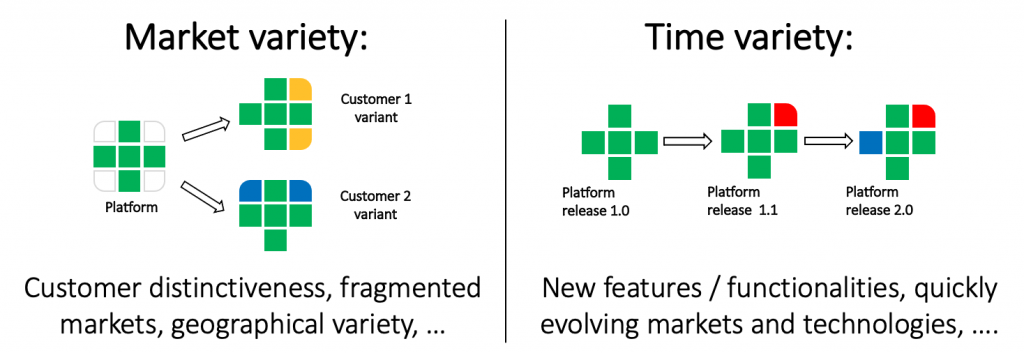Architecture Grounded Product Line
Mastering diversity
Why companies fail to efficiently develop a product line?
And why they consequently do not meet their business objectives
Many firms implement product-line/platform approach seeking to deliver variety while pursuing ambitious business objectives:


But developing a product line is not a piece of cake and can lead to:
Architecture grounded product line approach brings sustainable value and ensures the company to achieve its business goals by a structured approach
Our integrated approach relies on 3 complementary axis to deliver the full value of a product line / modular platform approach
